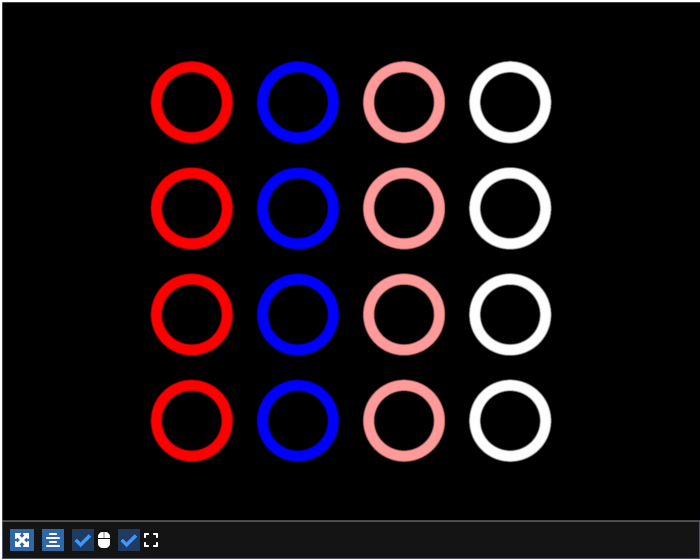Note
Go to the end to download the full example code.
Line collections quantitative cmap#
Example showing a line collection with a quantitative cmap

/home/runner/work/fastplotlib/fastplotlib/fastplotlib/graphics/features/_base.py:18: UserWarning: casting float64 array to float32
warn(f"casting {array.dtype} array to float32")
# test_example = true
from itertools import product
import numpy as np
import fastplotlib as fpl
def make_circle(center, radius: float, n_points: int = 75) -> np.ndarray:
theta = np.linspace(0, 2 * np.pi, n_points)
xs = radius * np.sin(theta)
ys = radius * np.cos(theta)
return np.column_stack([xs, ys]) + center
spatial_dims = (50, 50)
circles = list()
for center in product(range(0, spatial_dims[0], 15), range(0, spatial_dims[1], 15)):
circles.append(make_circle(center, 5, n_points=75))
pos_xy = np.vstack(circles)
# this makes 16 circles, so we can create 16 cmap values, so it will use these values to set the
# color of the line based by using the cmap as a LUT with the corresponding cmap_value
# highest values, lowest values, mid-high values, mid values
cmap_values = [10] * 4 + [0] * 4 + [7] * 4 + [5] * 4
figure = fpl.Figure(size=(700, 560))
figure[0, 0].add_line_collection(
circles, cmap="bwr", cmap_transform=cmap_values, thickness=10
)
# remove clutter
figure[0, 0].axes.visible = False
figure.show()
# NOTE: fpl.loop.run() should not be used for interactive sessions
# See the "JupyterLab and IPython" section in the user guide
if __name__ == "__main__":
print(__doc__)
fpl.loop.run()
Total running time of the script: (0 minutes 0.330 seconds)
